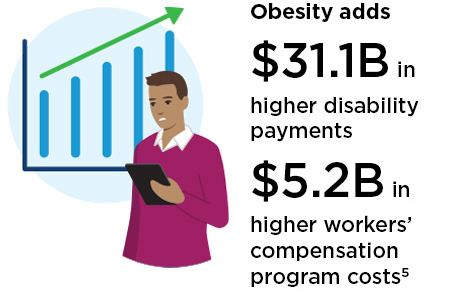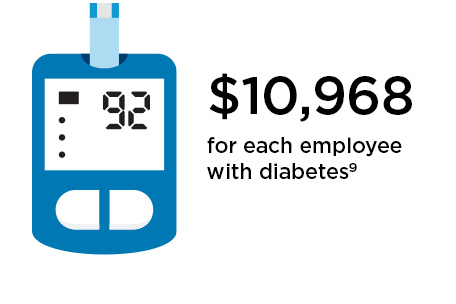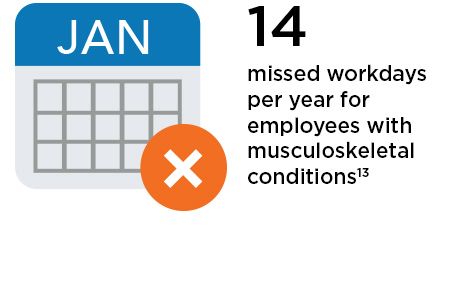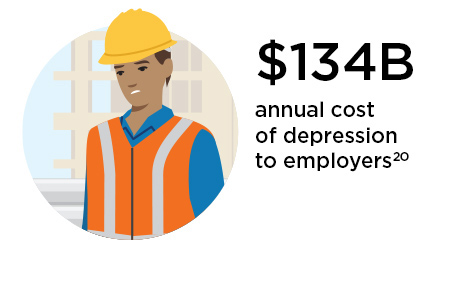
Chronic conditions like obesity, diabetes, and musculoskeletal injury pose a significant threat to occupational health, impacting employee well-being and employers’ bottom lines. Since nearly 40% of Americans have at least one chronic condition, costs to businesses will only continue to grow.1 By 2030, treatment of the 7 most common chronic conditions, coupled with productivity losses, will cost the U.S. economy $2 trillion annually.2
As health care costs rise, employers need to understand how taking proactive steps to promote employee health can help prevent workplace injuries and protect the health of their business.









